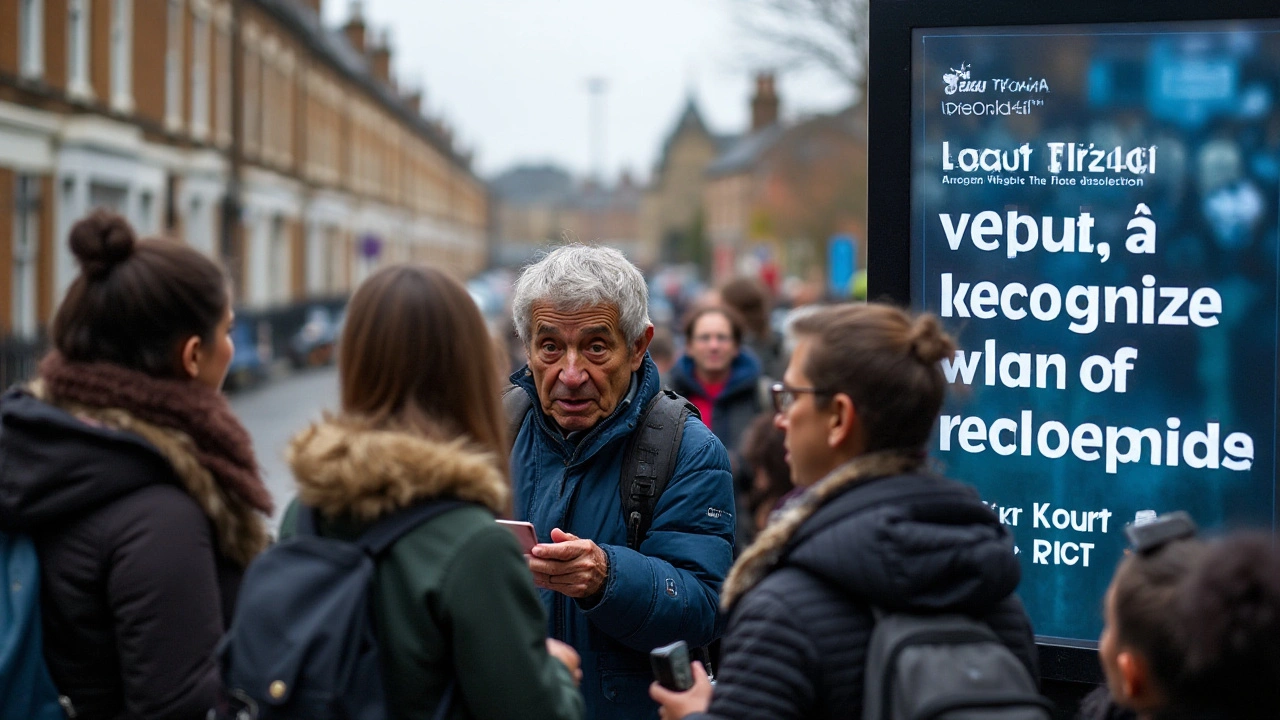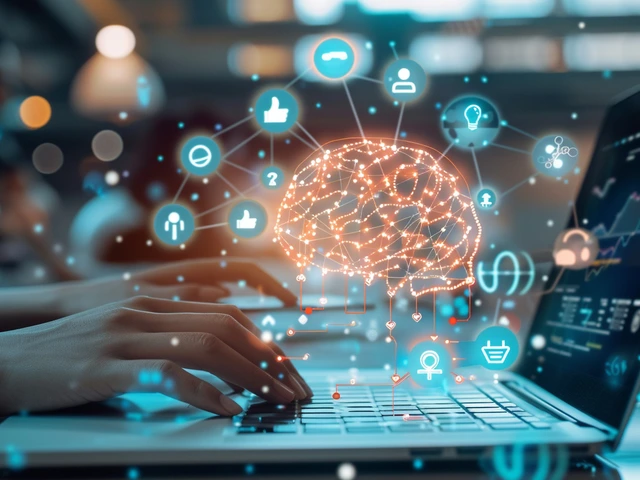In an era where information flows incessantly, understanding and analyzing propaganda is more crucial than ever. Propaganda, by nature, aims to influence public opinion through biased or misleading information.
With the advent of AI, and particularly tools like ChatGPT, we have an opportunity to delve deep into the intricacies of such information. AI can help us spot patterns and inconsistencies that might go unnoticed by the human eye.
ChatGPT, for instance, can analyze text and identify subtle cues that indicate propaganda. This could range from certain patterns in word usage to the tone used in the messaging.
This article explores the basics of propaganda, the robust role of AI in identifying misleading content, the specific capabilities of ChatGPT, and offers practical tips for using ChatGPT. As we move forward, the alliance of human intuition and AI-powered insights will be essential in navigating the information landscape.
- Understanding Propaganda
- Role of AI in Misleading Information
- How ChatGPT Deciphers Propaganda
- Practical Applications
- Future of Propaganda Analysis
Role of AI in Misleading Information
When we talk about AI, it's much more than just robots and futuristic technology. In today's world, AI plays a massive role in our daily lives, especially in the realm of information. Misleading information, or propaganda, has been around for centuries, but its scale has exploded with the advent of the internet. Here is where AI steps in as both a potential problem and a solution.
Artificial Intelligence has the ability to analyze vast amounts of data quickly and accurately. This means it can sift through numerous articles, social media posts, and news reports to identify patterns and inconsistencies. This is crucial in spotting misinformation. For instance, AI can detect when the same message is being spread across different platforms, indicating a coordinated effort to influence public opinion.
One specific example is the use of AI in identifying fake news. AI algorithms have been trained to recognize the language and structure commonly used in fake news. They identify things like emotional language, use of superlatives, and lack of credible sources. These are not always obvious to human readers but stand out clearly to a trained algorithm. According to a 2023 report by the MIT Media Lab, AI systems have successfully identified fake news with an accuracy rate of over 90%.
“AI has the potential to discern and disassemble misleading information more effectively than any human team,” says Arvind Narayanan, a computer science professor at Princeton University.
Beyond just identifying fake news, AI can also trace its origin. Understanding where misleading information comes from is critical in stopping its spread. AI can track the digital footsteps of a story, identifying the first few accounts that shared it and the networks that helped it go viral. This way, authorities can act quickly to shut down these sources.
One of the fascinating aspects of AI in this domain is its ability to learn and adapt. As misinformation techniques evolve, so do AI algorithms. This is done through a process called machine learning, where the AI is constantly trained on new data. This keeps it up-to-date with the latest ways misinformation is being spread. For instance, chatbots spreading propaganda on social media are detected and deactivated by the AI, thus limiting their reach.
And let's not forget the automated fact-checking systems. These use AI to compare claims made in a piece of content against a vast database of verified facts. They can then highlight any discrepancies, making it easier for readers to spot misleading information. Facebook and Google have invested heavily in such technology to keep their platforms genuine and reliable.
However, it's important to be aware of the ethical considerations. While AI can help to manage misinformation, it can also be used to create it. Deepfake technology, for instance, utilizes advanced AI to create realistic but fake videos and images. This can be extremely damaging as it becomes harder for the public to identify what is real and what is not.
| Year | AI Detection Accuracy |
|---|---|
| 2020 | 85% |
| 2021 | 88% |
| 2022 | 90% |
| 2023 | 92% |
In conclusion, the role of AI in managing misleading information is multifaceted and steadily evolving. It offers powerful tools to detect and counteract propaganda, though it must be used responsibly to avoid further complicating the information landscape. As both a parent and a concerned citizen, I'm optimistic about these technological advances but aware of their limitations. By staying informed and critical, we can all contribute to a more truthful information environment.

How ChatGPT Deciphers Propaganda
ChatGPT's ability to decipher propaganda hinges on its impressive natural language processing capabilities. This AI can examine texts for specific markers that point to manipulative content. One such marker is the recurrent use of emotionally charged words. These words aim to elicit strong emotional responses from the readers, which is a common tactic in propaganda. ChatGPT can spot these words and phrases, flagging them for further analysis.
Another way ChatGPT helps in deciphering propaganda is by analyzing the structure of the text. Propaganda pieces often follow certain formats that aim to reinforce their persuasive messages. ChatGPT can break down the text, comparing it to other known propaganda structures, making it easier to spot manipulation. This structural analysis becomes very helpful, especially when dealing with long-form content where the agenda might be hidden deep within paragraphs.
The AI also checks for inconsistencies within the text. Propaganda often contains contradictions, either to confuse or mislead the reader. ChatGPT can highlight these inconsistencies, making it easier to question the validity of the information. For example, a text may make bold claims that contradict widely accepted facts. The AI’s ability to cross-reference these claims with reputable data sources helps in identifying such misinformation.
Besides analyzing the text’s tone and structure, ChatGPT also considers its context. Propaganda usually doesn't exist in a vacuum; it often accompanies other similar pieces that share a common narrative. ChatGPT can analyze these connections, examining how a particular piece fits into the larger web of related propaganda. This contextual understanding is crucial in identifying coordinated misinformation efforts.
An interesting capability of ChatGPT is its skill in recognizing rhetorical devices. Propaganda frequently employs rhetorical questions, hyperboles, and loaded language to sway opinions. By flagging such devices, ChatGPT helps readers become aware of the attempts to manipulate their views. An example of this might be the exaggerated use of threats or promises within the text. Spotting such exaggerations can be a clear indicator of propaganda.
According to a study by the Stanford Internet Observatory, “AI can significantly augment our ability to detect and challenge disinformation.” This quote emphasizes the growing role of tools like ChatGPT in tackling the complex issues of modern-day propaganda.
Moreover, ChatGPT’s algorithm can undergo continuous learning. This adaptability means it keeps getting better at identifying new forms of propaganda as they emerge. Users can also feed it new data, making it an ever-improving tool for this purpose. For instance, if a new phrase starts to be used in propaganda, ChatGPT can quickly adapt to recognize and flag it.
Furthermore, it can be personalized to fit specific needs. Different regions or communities might face unique types of propaganda, and ChatGPT can be trained to focus on these specifics. This customization ensures that the AI remains relevant and effective in various settings, from educational institutions to media houses.
Finally, it’s worth mentioning that ChatGPT isn't just for identifying propaganda; it’s also great for debunking it. Once a piece of propaganda is flagged, ChatGPT can assist in generating counter-narratives that are based on factual information. This feature can be very effective for journalists and fact-checkers who need to respond promptly to misleading information.

Practical Applications
When it comes to using ChatGPT for analyzing propaganda, there are several practical applications that can revolutionize our approach to understanding and combating misinformation. One of the key areas is in journalism. Journalists can employ ChatGPT to sift through large volumes of information, highlighting potential bias or propaganda. This can be especially useful in verifying sources and cross-referencing facts, saving time and enhancing accuracy.
Another sector that can benefit immensely is education. Educators can use ChatGPT to teach students about propaganda by analyzing historical examples or current events. Through interactive sessions, students can learn to identify propaganda techniques and understand their impact. This not only makes learning engaging but also equips the next generation with critical thinking skills.
Government agencies and non-profits working on public awareness campaigns can also leverage ChatGPT. By identifying and debunking propaganda in real time, these organizations can ensure that accurate information reaches the public. This is particularly crucial during elections or public health crises, where misinformation can have dire consequences.
Marketing and advertising professionals can use ChatGPT to create more ethical campaigns. By analyzing content through the lens of propaganda, marketers can avoid manipulative tactics and build trust with their audience. This can lead to more effective and transparent communication strategies, which are increasingly valued in today’s consumer landscape.
According to a report by the Stanford Internet Observatory, "The insights provided by AI tools like ChatGPT can be pivotal in understanding the reach and impact of propaganda."
Additionally, academics and researchers can harness the power of ChatGPT for in-depth studies on propaganda. By analyzing vast datasets, they can uncover trends and patterns that might not be immediately apparent. This can contribute to the broader understanding of how propaganda works and how best to counteract it.
For instance, ChatGPT can be programmed to flag certain keywords or phrases often used in propaganda. This capability can be tailored to specific needs, whether it's tracking political rhetoric or monitoring social media for disinformation. The ability to customize and scale this technology makes it an invaluable tool across various fields.
AI like ChatGPT is not just a theoretical tool but a practical ally in our ongoing battle against misinformation. Whether you are in media, education, public service, marketing, or research, integrating ChatGPT into your workflow can provide significant advantages. The key is to understand its capabilities and apply them thoughtfully to maximize impact.

Future of Propaganda Analysis
As we delve into the future, the landscape of propaganda analysis is set to evolve dramatically. One of the revolutionary changes will be the integration of AI tools like ChatGPT. These tools will not only enhance our capacity to identify misleading information but also improve the speed and efficiency with which we can do so. The ever-increasing volume of information means traditional methods of analysis are becoming less effective.
Imagine a world where AI continuously scans and evaluates news articles, social media posts, and even video content in real-time. This real-time analysis will enable us to catch propaganda attempts almost as soon as they occur. With advancements in natural language processing, AI will become more adept at understanding the nuances and cultural contexts that shape propaganda.
“AI tools like ChatGPT have the potential to become the first line of defense against the spread of misinformation and propaganda,” says Dr. Emily Turner, a leading expert in AI ethics.
Another exciting development lies in collaborative AI systems. These systems can pool insights from multiple AI tools, creating a more comprehensive and accurate analysis. For instance, while ChatGPT focuses on textual content, other AI models can analyze visual and auditory data. Together, they form a robust net that catches various forms of content meant to mislead or manipulate.
AI and Human Collaboration
A significant aspect of the future will be how humans and AI collaborate. AI can handle the grunt work—processing vast amounts of data quickly and identifying potential propaganda. However, human oversight remains crucial for interpreting these findings and making judgments. Combining human intuition with AI’s analytical prowess will set new standards for content scrutiny. This hybrid approach will be particularly beneficial in educational settings, equipping future generations with the tools to discern truth from fiction.
The emergence of decentralized and community-driven AI models also warrants attention. These models allow a wider base of users to contribute to the fine-tuning of propaganda detection algorithms. Open-source projects will likely play an integral role, democratizing access to powerful analytical tools. This community involvement ensures that the evolving tactics of propagandists are quickly incorporated into the analysis process.
International Cooperation
Propaganda is a global issue requiring international cooperation for effective management. Future tools will likely feature multilingual capabilities, enabling them to analyze content across different languages and cultural settings. This will be particularly useful for international organizations working to maintain the integrity of information across borders. Governments and independent organizations alike will benefit from sharing insights and developing universal standards for propaganda analysis.
Lastly, let’s talk about the regulatory framework. As AI tools for propaganda analysis become more prevalent, the need for ethical guidelines and regulations will grow. These rules will ensure that the technology is used responsibly and without infringing on individual freedoms. Policies may emerge that govern how data is collected, analyzed, and utilized, ensuring transparency and accountability in the process.





